

Azerbaijan

Jump to: Baku
Jump to: Mereza
Jump to: Niyazi House Museum
Jump to: Old Baku
Jump to: Sheki
Jump to: Soviet period oil industry

the country
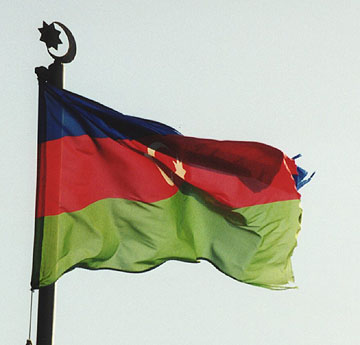
the flag
Azerbaijan, republic of western Asia, bordered on the north by Russia, on the east by the Caspian Sea, on the south by Iran, on the west by Armenia, and on the northwest by Georgia. Azerbaijan is the easternmost country of Transcaucasia (the southern portion of the region of Caucasia), which occupies the southern part of the isthmus between the Black and Caspian seas.
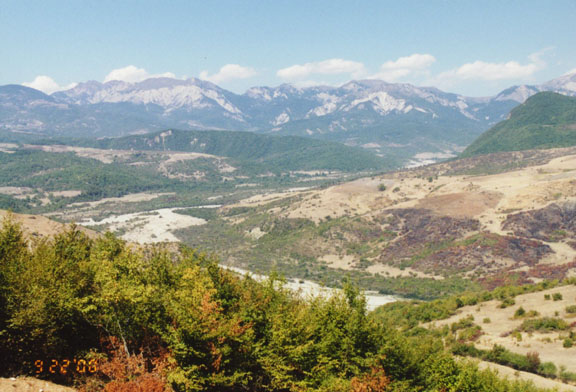
Caucasus mountains
In Azeri, the official state language, the republic is called Azarbaijchan Respublikasy (Republic of Azerbaijan). The republic includes the region of Nagorno-Karabakh, a predominantly Armenian-inhabited enclave in western Azerbaijan, and the autonomous exclave of Naxçývan (Nakhichevan’), which is separated from the rest of Azerbaijan by a mountainous strip of Armenian territory. Baku, a large port city on the Caspian Sea, is Azerbaijan’s capital and largest city.
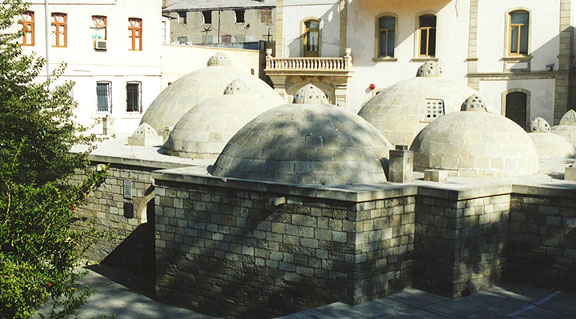
Qasimbay Hammam
After a mere two years of independence, Azerbaijan was invaded by the Bolshevik Red Army in 1920 and became part of the Union of Soviet Socialist Republics (USSR) in 1922.
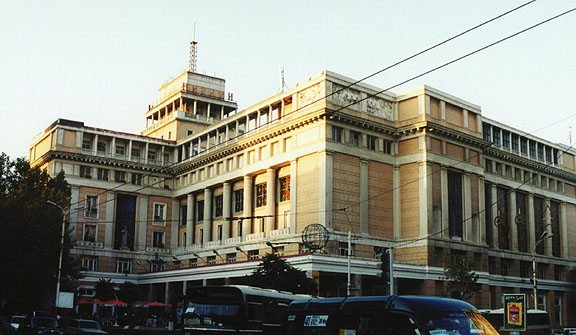
Soviet style building
In 1991 it became independent again. The republic’s first years of renewed independence were troubled by political upheaval, economic decline, and a war in Nagorno-Karabakh.
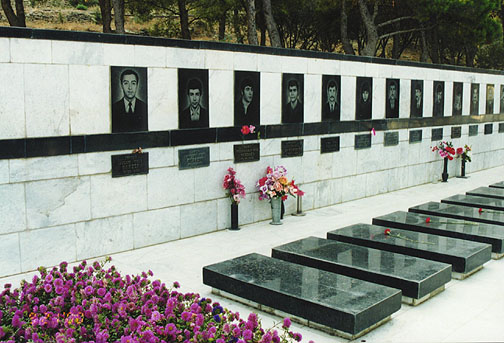
memorial to those killed in Nagorno-Karabakh war
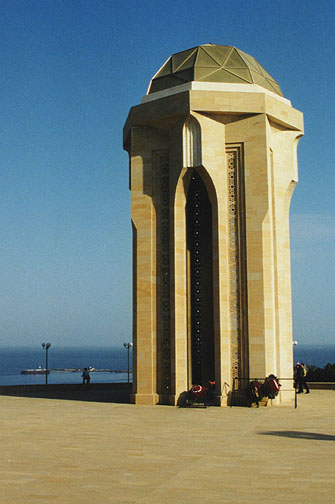
Monument on Martyr's Lane
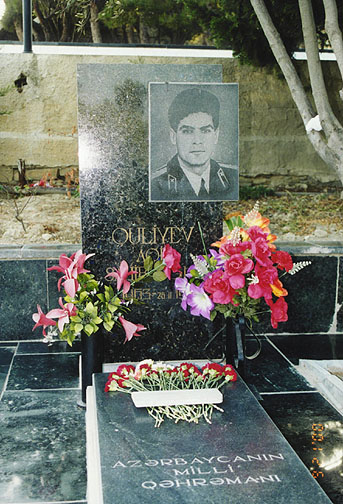
soldiers grave marker
Until a cease-fire agreement effectively ended the war in May 1994, Armenians in Nagorno-Karabakh fought for secession of the enclave. In 1995 Azerbaijan held its first legislative elections since independence and passed its first post-Soviet constitution.

remnants of Soviet Oil production
More Photos of Baku Oil Industry
The official language of Azerbaijan is Azeri, a Turkic language of the Altaic family that is closely related to the Turkish and Turkmen languages (see Altaic Languages). Azeri originally developed in the Arabic script, but in the 1920s a Latin (or Roman) alphabet was introduced. In 1939 the Soviet regime mandated the use of the Cyrillic alphabet, the script of the Russian language. After Azerbaijan gained independence, the government abandoned the Cyrillic alphabet and adopted a Turkish version of the Latin script. Russians and Armenians primarily use their own native languages.
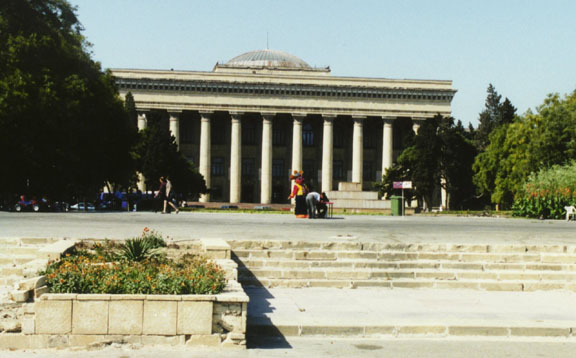
fountain square in Baku
Azerbaijanis are traditionally Muslim. Islam was introduced in the area of
present-day Azerbaijan during the 7th century AD, and Shiite Islam was
established as the official religion of the Azerbaijanis in the 16th century (see
Shiites).
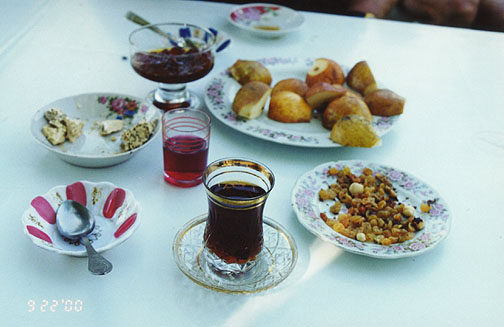
Azeri tea
During the Soviet period, religious leaders were persecuted, mosques were closed or destroyed, and religious practice was officially condemned. Islam has experienced a revival in Azerbaijan since the late 1980s, when political reforms allowed most of the Soviet restrictions on religion to be lifted. Nearly all Azerbaijanis now identify as Muslim, although few actively practice their religion. About 70 percent of Azerbaijanis are Shiites, and about 30 percent are Sunnites. Christianity is practiced to varying degrees among the Georgian, Armenian, and Slavic minorities.

Xan Sarayi, the Khan's Palace
![]()
Tolstoy in the Caucasus
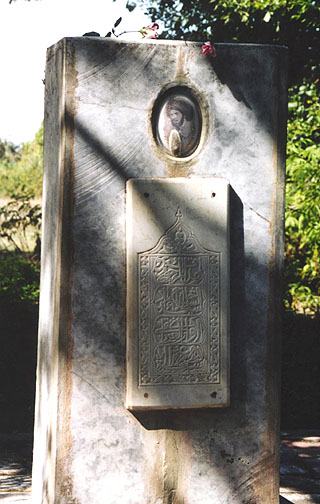
grave
marker for Hadji-Murad
a folk hero
Tolstoy eventually returned to writing fiction, but with a growing audience of less educated people in mind. The novel Voskresenie (1899; Resurrection, 1899), with a hero who follows the promptings of his conscience and gives up his social position and property, has passages of great power but does not reach the level of Tolstoy’s two great novels. His last work of prose fiction, Hadji-Murad (written 1904; published 1911; translated 1912), returns to the Caucasus, where his stories of the 1850s were set, and includes relatively little moralizing.
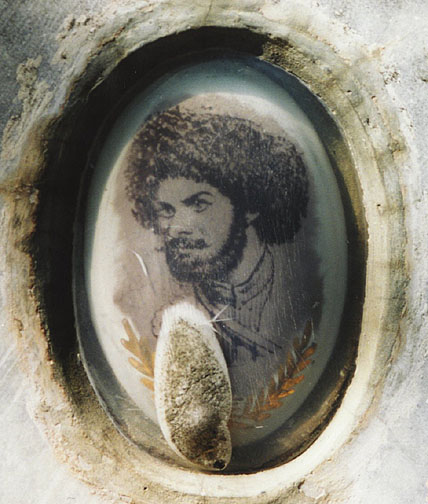
image of Hadji-Murad
![]()
![]()